Spring represents nature’s grand reawakening across America’s diverse landscapes. As winter retreats, national parks transform into vibrant theaters of wildlife activity, offering visitors unparalleled opportunities to witness animals emerging from hibernation, migrating species returning to their breeding grounds, and newborn wildlife taking their first steps. This seasonal renaissance creates the perfect backdrop for wildlife enthusiasts, photographers, and nature lovers seeking authentic encounters with America’s remarkable fauna in their natural habitats. From the mist-shrouded mountains of the Appalachians to the vast plains of the Midwest and the coastal sanctuaries of the Pacific, each national park presents its own unique spring wildlife spectacle. This guide explores the most rewarding national parks for spring wildlife watching, highlighting signature species, optimal viewing locations, and practical tips to enhance your wilderness experience during this magical season of renewal.
Yellowstone National Park: America’s Wildlife Sanctuary

Yellowstone National Park stands as the crown jewel of spring wildlife watching opportunities in America. As the snow melts in April and May, the park’s valleys transform into nurseries for iconic North American mammals. The Lamar Valley, often called “America’s Serengeti,” offers visitors front-row seats to observe recently born bison calves with their distinctive reddish-orange coats (often affectionately called “red dogs”) frolicking alongside their protective mothers. Gray wolves, successfully reintroduced to the park in the 1990s, become more visible as they hunt and care for new pups, particularly in the early morning hours across the northeastern portion of the park. Grizzly bears emerge from hibernation with an intense hunger, frequently spotted digging for roots and hunting elk calves along riverbanks and meadow edges. For bird enthusiasts, the spring migration brings sandhill cranes, mountain bluebirds, and osprey back to the park’s diverse ecosystems. The reduced crowds in spring (compared to summer) allow for more intimate wildlife viewing experiences, though visitors should prepare for variable weather conditions and limited facility operations in the early season.
Grand Teton National Park: Spring Migrations and Mountain Majesty

Just south of Yellowstone, Grand Teton National Park offers some of the most dramatic spring wildlife watching against the backdrop of the towering Teton Range. The park becomes the stage for one of North America’s most impressive wildlife migrations as approximately 8,000 elk journey from their winter range in the National Elk Refuge into the park’s lusher summer grounds. This spectacle typically occurs in May and early June, creating opportunities to witness large herds crossing meadows and rivers. Moose, particularly females with new calves, can be spotted browsing in willow thickets along the Snake River and around Oxbow Bend. Spring also marks the return of trumpeter swans, bald eagles, and osprey to the park’s numerous lakes and waterways. Photographers particularly value the magical combination of active wildlife, snowcapped mountains, and spring wildflowers that characterize the Tetons during this season. The Moose-Wilson Road and Antelope Flats provide excellent wildlife viewing routes, though some areas may remain closed until later in spring due to snowpack and wildlife management considerations.
Great Smoky Mountains National Park: Eastern Wildlife Spectacle
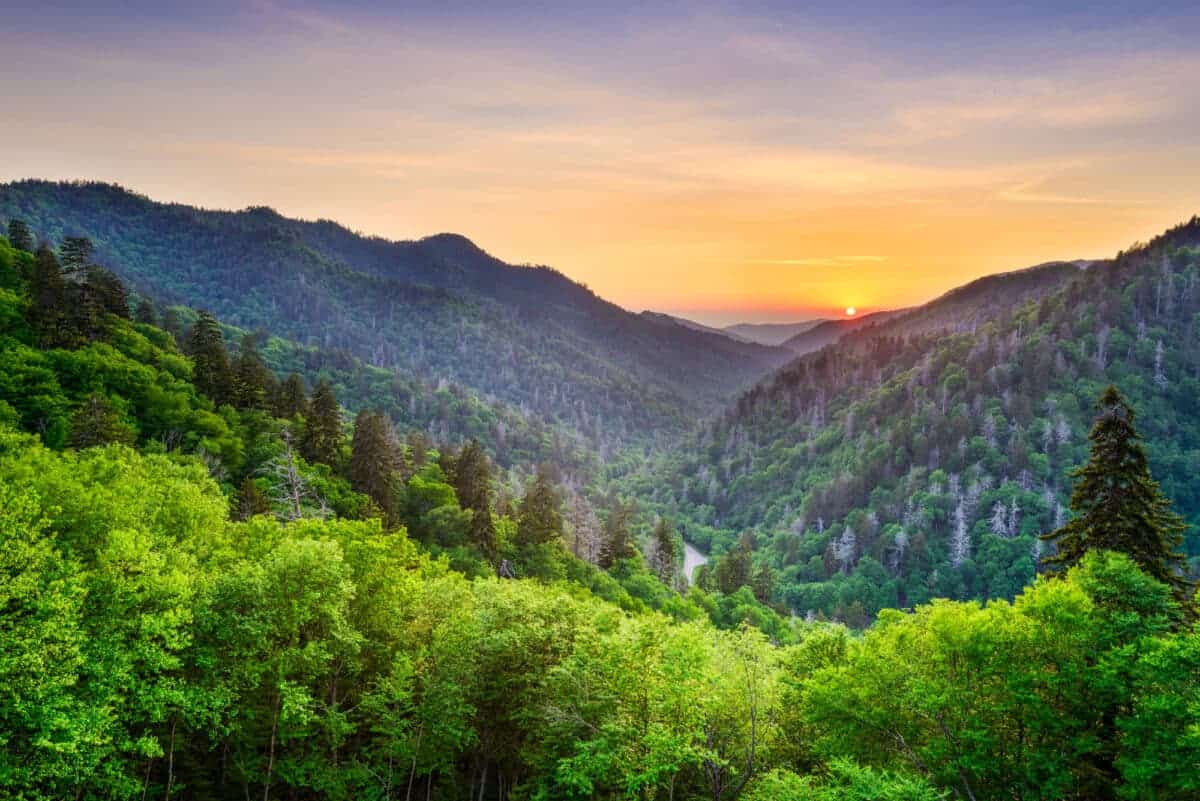
As the most visited national park in the United States, Great Smoky Mountains offers an accessible eastern showcase of spring wildlife reemergence. The park’s famous black bear population becomes increasingly active in April and May, with mothers and new cubs venturing out to forage in the park’s rich forests. Approximately 1,500 bears inhabit the park, creating frequent viewing opportunities along popular trails and roadways. Spring also brings the emergence of the park’s remarkable diversity of salamanders – the Smokies are known as the “Salamander Capital of the World” with over 30 species. Wildflower blooms peak in April, attracting numerous butterfly species and creating a colorful backdrop for wildlife watching. The Cades Cove Loop Road provides excellent opportunities for viewing white-tailed deer, wild turkeys, and occasionally bears, especially in early morning or late afternoon. The park’s lower elevations warm first, making areas like Cataloochee Valley prime spots for early spring wildlife activity. Birders can enjoy the return of over 240 species of birds, including the vibrant scarlet tanager and indigo bunting, whose brilliant colors stand out against the fresh spring foliage.
Everglades National Park: Wading Bird Spectacular
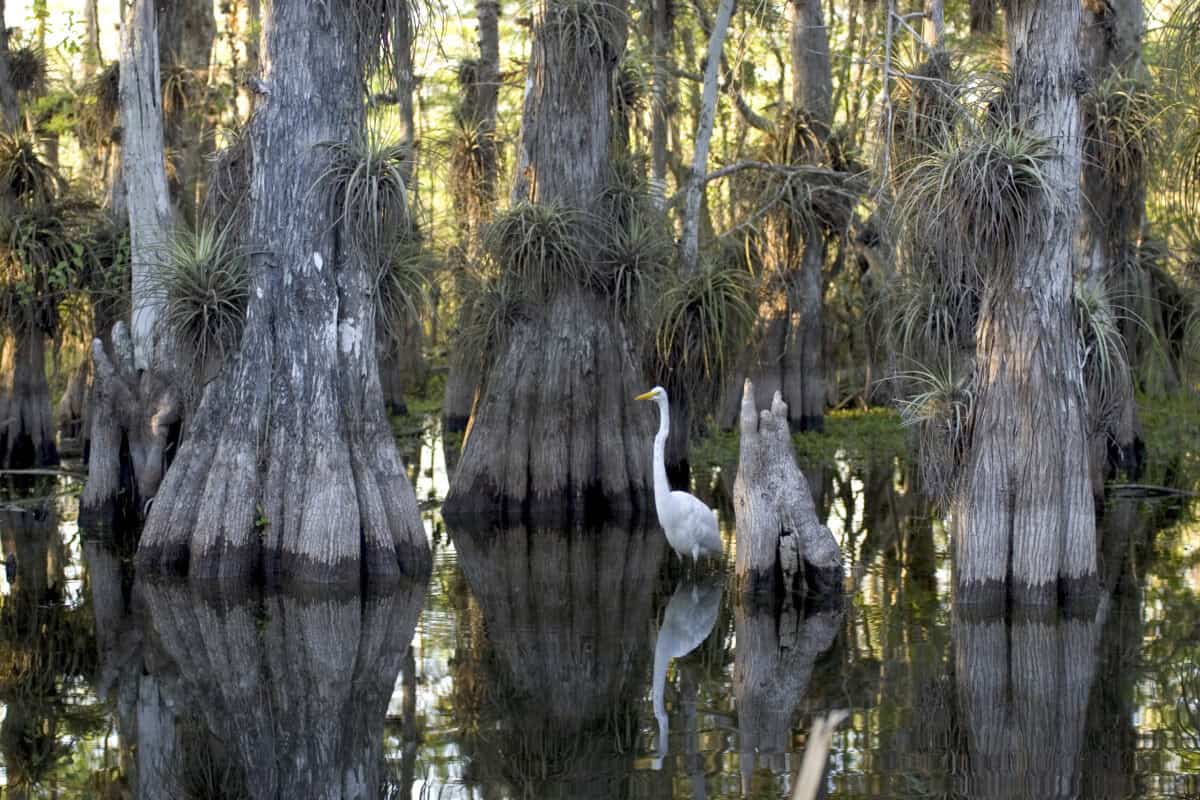
Spring in Everglades National Park coincides with the dry season, concentrating wildlife around remaining water sources and creating exceptional viewing opportunities. The park hosts what many consider North America’s most impressive bird spectacle as thousands of wading birds – including roseate spoonbills, wood storks, great egrets, and multiple heron species – gather at shrinking water holes to feed on concentrated fish populations. Anhinga Trail becomes a wildlife photographer’s paradise, offering close views of alligators, turtles, and wetland birds against a backdrop of mirrorlike waters. The park’s distinctive American crocodiles become more visible as they bask along coastal areas, particularly at Flamingo. Mammals like the endangered Florida panther, though rarely seen, are more active in the cooler spring months, along with more commonly spotted white-tailed deer and marsh rabbits. Late spring (May) marks the beginning of sea turtle nesting season along the park’s protected coastlines. The reduced mosquito populations during spring make exploration more comfortable, allowing visitors to venture deeper into this unique ecosystem that represents the largest subtropical wilderness in the United States.
Olympic National Park: Forest, Mountain and Coastal Wildlife
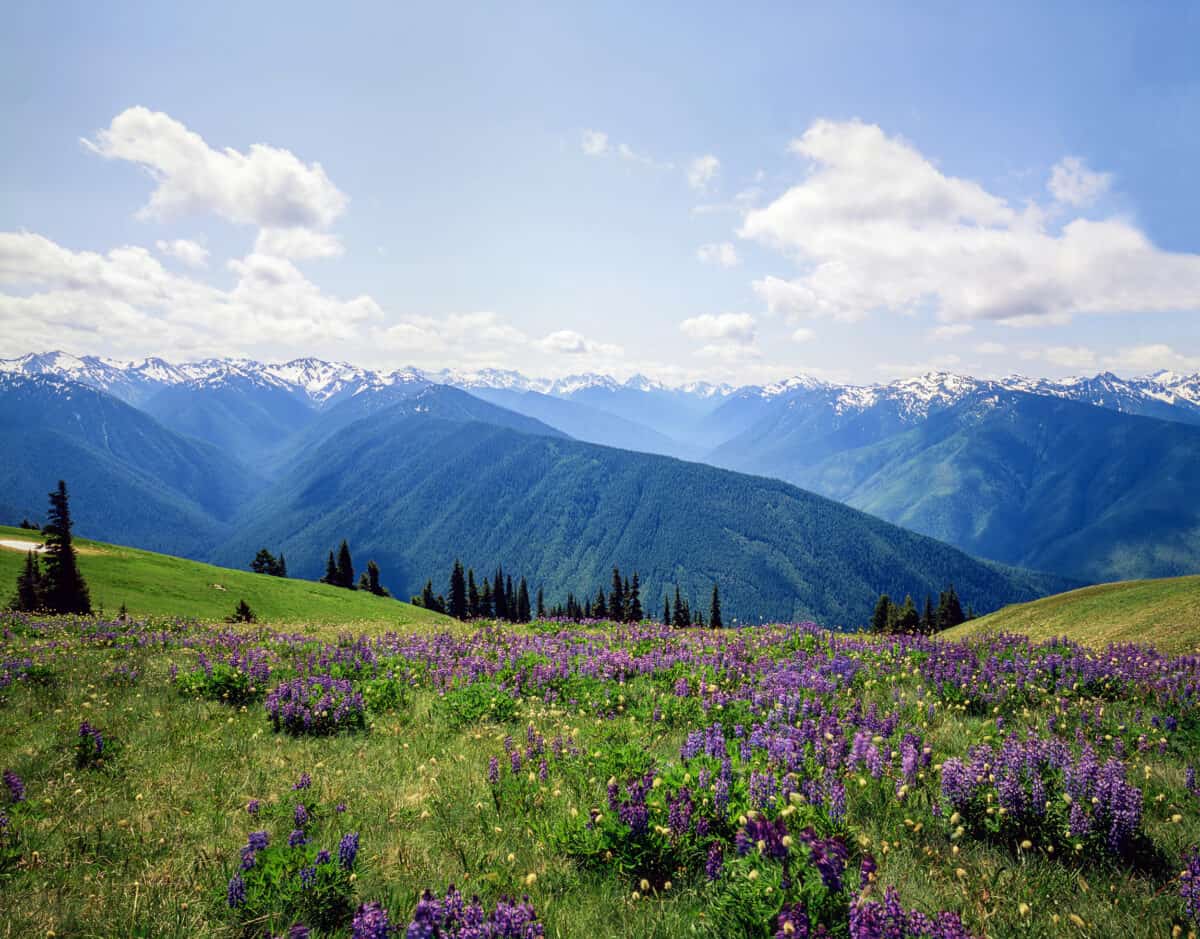
Olympic National Park’s extraordinary diversity of ecosystems – from temperate rainforests to alpine meadows to rugged coastlines – creates varied spring wildlife viewing opportunities unlike any other park. Along the park’s 73 miles of wilderness coastline, spring brings the gray whale migration, with approximately 20,000 whales passing offshore between March and May as they journey from Baja California to Alaska. Tide pools teem with renewed activity as colorful sea stars, anemones, and other marine invertebrates become more visible during spring’s extreme low tides. In the park’s legendary rainforests, Roosevelt elk calving season begins, with new offspring visible in meadow edges and forest openings. The Hoh Rainforest, with its moss-draped bigleaf maples and towering Sitka spruce, provides habitat for numerous bird species, including the northern spotted owl and varied thrush, whose haunting songs echo through the misty forest. At higher elevations, as snow begins melting in late spring, black bears emerge to feed on fresh vegetation in subalpine meadows, particularly around Hurricane Ridge. Spring also marks the beginning of the salmon runs in the park’s pristine rivers, attracting bald eagles and occasionally river otters that feast on the returning fish.
Denali National Park: Alaska’s Spring Awakening

Though Denali’s full opening typically occurs later than more southern parks, late spring (May) offers intrepid wildlife watchers a unique opportunity to witness Alaska’s remarkable fauna against a backdrop of snow-covered peaks and emerging greenery. The park road opens partially in spring, allowing access to prime wildlife viewing areas where the “Big Five” – grizzly bears, wolves, moose, caribou, and Dall sheep – become increasingly active. Newly emerged grizzlies can be spotted digging for roots and ground squirrels on open hillsides, while moose feed on fresh willow growth in wetland areas. Caribou begin their movement to calving grounds, creating opportunities to see large herds in transit. Birdlife explodes with activity as migratory species return to breed, including the striking ptarmigan changing from winter white to summer mottled plumage. Golden eagles soar along mountain ridges hunting for emerging ground squirrels and marmots. The park’s limited spring visitation creates a more solitary experience for wildlife watchers willing to brave variable weather conditions. Spring visitors should be prepared for cold temperatures and partial facilities, but they’ll be rewarded with wildlife viewing experiences free from summer crowds and the special chance to witness Alaska’s dramatic seasonal transition.
Shenandoah National Park: Appalachian Spring Revival

Situated just 75 miles from Washington D.C., Shenandoah National Park offers accessible spring wildlife viewing along the crest of Virginia’s Blue Ridge Mountains. The park’s famous Skyline Drive provides 105 miles of wildlife watching opportunities, with numerous overlooks and trailheads where visitors can observe the spring reawakening. Black bears emerge from winter dormancy in April, often visible with cubs as they forage for fresh vegetation along forest edges and in mountain meadows. The park’s healthy white-tailed deer population becomes more active and visible, with fawns appearing in late spring. Birdwatchers flock to Shenandoah in spring to witness the return of neotropical migrants – with over 200 bird species, including the vibrant scarlet tanager, cerulean warbler, and rose-breasted grosbeak establishing breeding territories among the park’s hardwood forests. Spring wildflower displays peak in April and May, attracting numerous pollinator species including butterflies and native bees. The park’s many waterfalls, swollen with spring rains, create refreshing microhabitats where salamanders and aquatic life thrive. The park’s proximity to major population centers makes it an ideal destination for weekend wildlife watchers seeking spring nature immersion without extensive travel.
Theodore Roosevelt National Park: Prairie Wildlife Paradise
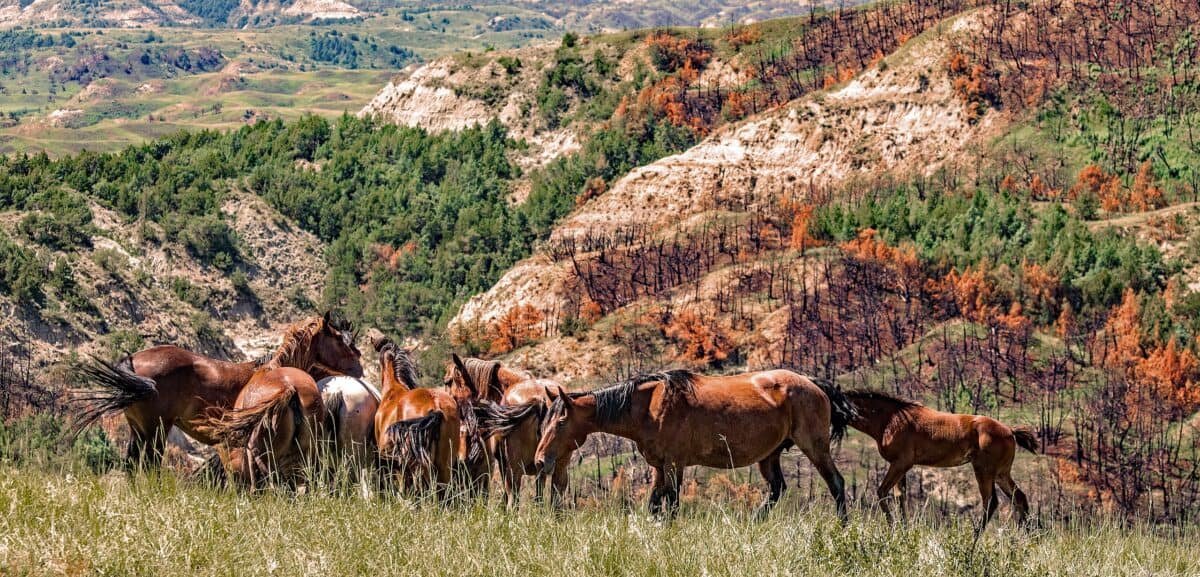
Spring transforms North Dakota’s Theodore Roosevelt National Park into a vibrant showcase of Great Plains wildlife. The park’s mixed-grass prairie ecosystem bursts with new life as bison calves, born with distinctive orange-red coats, join the park’s herd of approximately 600 animals. The South Unit’s 36-mile scenic drive offers excellent opportunities to observe not only bison but also bands of wild horses – descendants of ranch stock that have roamed free for generations. Spring brings the prairie dog towns to peak activity, with young pups emerging from burrows and complex social behaviors on full display. These colonies in turn attract predators like American badgers, coyotes, and occasionally golden eagles. Mule deer and pronghorn antelope birth their young in spring, with fawns sometimes visible in sheltered ravines and grasslands. The park’s rugged badlands terrain, carved into fantastical forms by seasonal runoff, provides nesting sites for prairie falcons, golden eagles, and white-throated swifts. The Little Missouri River, running through both units of the park, attracts beavers, river otters, and numerous waterfowl species. Spring’s moderate temperatures and reduced crowds create ideal conditions for wildlife observation in this park that inspired Theodore Roosevelt’s conservation ethic.
Channel Islands National Park: Marine Mammal Nursery

Spring transforms California’s Channel Islands National Park into a remarkable nursery for marine mammals and seabirds. The park’s five islands and surrounding waters host breeding colonies of California sea lions, harbor seals, and the unique northern elephant seals. Spring visitors can witness mother seals with pups on protected beaches, particularly at Point Bennett on San Miguel Island, which hosts one of the largest pinniped rookeries in the world with up to 50,000 seals and sea lions during peak season. The islands also provide crucial nesting habitat for seabirds, including the endangered California brown pelican, western gulls, and the rare Scripps’s murrelet. Spring whale watching opportunities abound as gray whales migrate past the islands, and resident populations of dolphins, harbor porpoises, and occasionally blue whales (the largest animals on Earth) feed in the nutrient-rich waters of the Santa Barbara Channel. On land, the islands’ isolation has created unique subspecies of wildlife, including the diminutive island fox, found nowhere else on Earth. Spring brings wildflower displays across the islands’ varied terrain, attracting numerous butterfly species. While advance planning is required for island visits (accessible only by concessionaire boats or private vessels), the extra effort rewards wildlife enthusiasts with uncrowded viewing of some of California’s most pristine natural communities.
Acadia National Park: New England’s Coastal Wildlife Haven

Spring breathes new life into Maine’s Acadia National Park as warming temperatures transform the landscape and awaken dormant wildlife. The park’s unique position at the intersection of northern and southern species ranges creates exceptional biodiversity. Along the rugged Atlantic coastline, harbor seals give birth to pups on offshore islands and ledges in May, visible from several hiking trails and the popular Park Loop Road. Peregrine falcons, having made a remarkable recovery in the park, return to historic nesting sites on the sea cliffs, where rangers often set up spotting scopes for visitors to observe these aerial hunters. Spring migration brings a wave of songbirds to the park, with over 220 species recorded as they establish breeding territories or rest during longer journeys north. The park’s numerous ponds and wetlands become active with river otters, beavers, and various amphibians emerging from winter dormancy. Whitetail deer become more visible with new fawns, particularly in the early morning along meadow edges. Visitors might glimpse more elusive residents like bobcats and coyotes, which become more active hunting for small mammals in spring. The park’s diversity of habitats – from spruce-fir forests to granite mountaintops to freshwater lakes – provides niches for countless species reawakening with the season, all accessible via the park’s 120 miles of hiking trails.
Big Bend National Park: Desert Spring Bloom
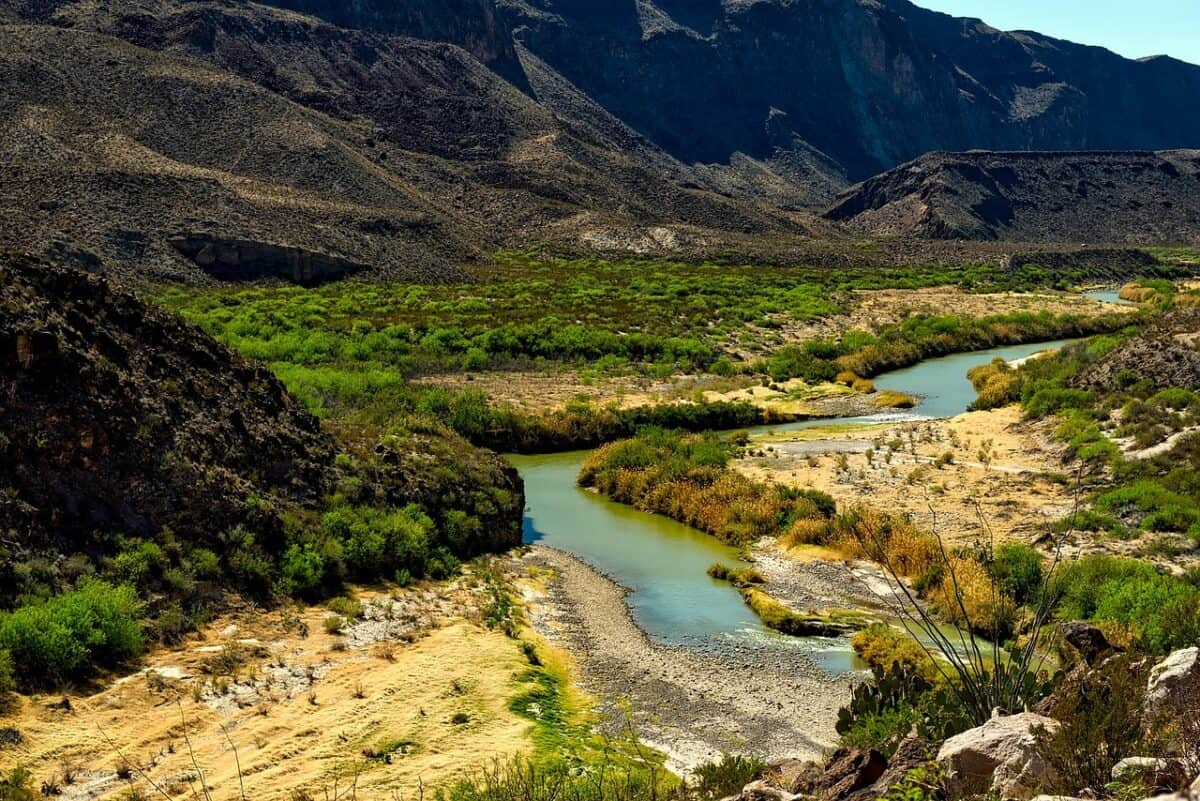
Spring transforms Texas’s Big Bend National Park from harsh desert to vibrant oasis as cooler temperatures and occasional rains trigger a biological renaissance. The park’s location along the Rio Grande creates a biodiversity hotspot where Chihuahuan Desert, mountain, and river ecosystems converge. Spring wildflower displays can be spectacular, with ocotillo, prickly pear cactus, and bluebonnets creating colorful carpets that attract numerous pollinator species. The park hosts more than 450 bird species, with spring migration bringing colorful visitors like the painted bunting, varied buntings, and several hummingbird species. Dawn bird walks along the Rio Grande reveal green kingfishers, bright vermilion flycatchers, and yellow-billed cuckoos establishing territories. Desert mammals become more active in the cooler spring months, with opportunities to observe javelinas, gray foxes, and the park’s healthy population of black bears (which returned naturally from Mexico after being extirpated). Mountain lions, though rarely seen, patrol territories that encompass the park’s varied terrain from river bottoms to the peaks of the Chisos Mountains. Reptiles emerge from winter dormancy, with numerous lizard species basking on rocks and occasional sightings of western diamondback rattlesnakes. The moderate spring temperatures (before summer’s extreme heat) create perfect conditions for exploring this remote wilderness and its remarkable adaptation to desert conditions.
Essential Tips for Spring Wildlife Watching
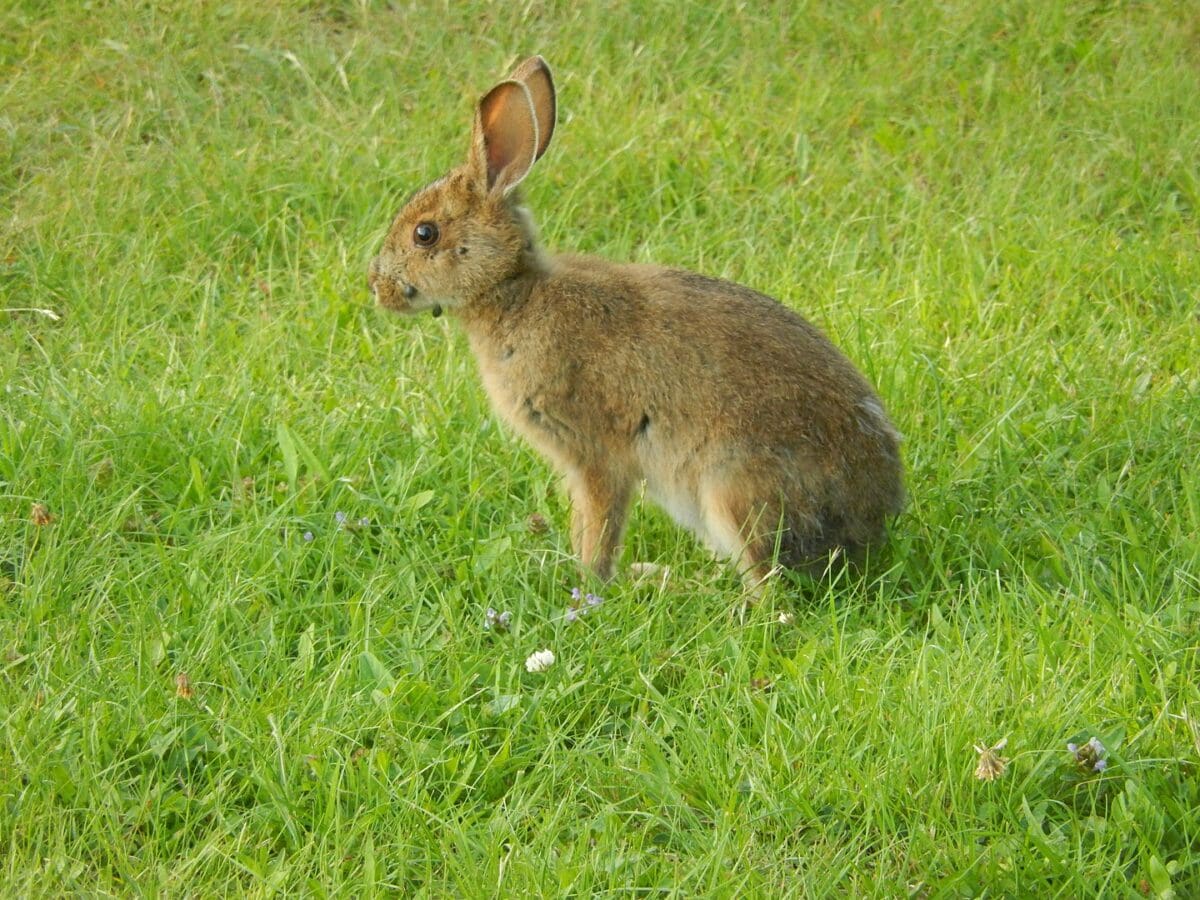
Successful spring wildlife watching requires preparation and proper techniques to maximize encounters while respecting animal welfare. Early morning and late afternoon typically offer peak activity periods when animals feed and move about. Proper optics make a tremendous difference – quality binoculars (8×42 or 10×42 magnification) allow detailed observation without disturbing wildlife, while spotting scopes enable viewing of distant subjects like nesting birds or mountain goats. Weather-appropriate clothing is essential, as spring conditions can change rapidly; layering allows adaptation to temperature fluctuations throughout the day. All national parks enforce minimum viewing distances (typically 100 yards for predators like bears and wolves, 25 yards for other large mammals), both for visitor safety and to prevent wildlife disturbance. Learning key behaviors before your visit helps identify viewing opportunities – understanding that bison calving occurs in late April or that grizzlies frequent south-facing slopes after hibernation can guide your search. Many parks offer ranger-led wildlife programs in spring, providing expert guidance and interpretation. Keeping a field journal of sightings enhances the experience and contributes to citizen science efforts. Finally, practice responsible wildlife photography by avoiding actions that alter animal behavior or create unsafe situations – remember that no photograph is worth harassing wildlife or risking personal safety.
America’s national parks offer unparalleled opportunities to witness the remarkable spring awakening of native wildlife across diverse ecosystems. From Yellowstone’s wolf packs and bison calves to the elegant wading birds of the Everglades, spring unleashes a biological renaissance that captivates visitors willing to venture into these protected landscapes. These seasonal wildlife spectacles connect us to natural rhythms that have shaped the continent for millennia, providing windows into ecological processes often invisible in more developed areas. As climate change alters traditional patterns of migration, hibernation, and reproduction, documenting and appreciating these spring wildlife
- The Best US National Parks for Spring Wildlife Watching - August 24, 2025
- Why Bears Play—and What It Teaches Us - August 24, 2025
- 12 Dog Breeds That Can Survive a Coyote Attack - August 24, 2025

